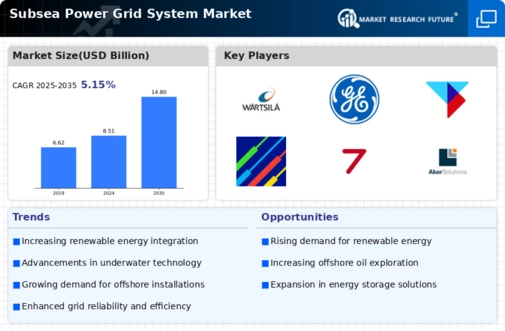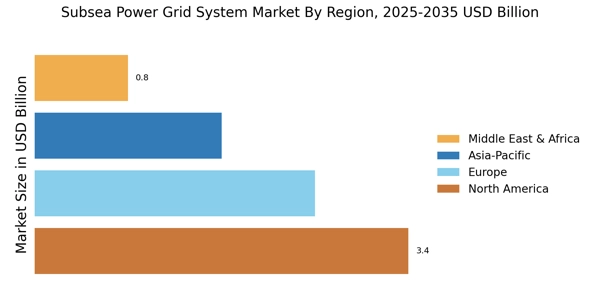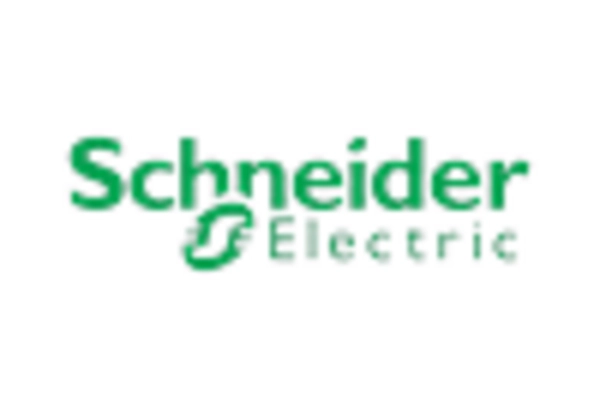Growing Focus on Energy Security
Energy security concerns are increasingly influencing the Subsea Power Grid System Market. Nations are recognizing the need to secure their energy supply chains, particularly in light of geopolitical tensions and fluctuating fossil fuel prices. Subsea power grids offer a strategic advantage by enabling the integration of diverse energy sources, including renewables and traditional fossil fuels. This diversification enhances resilience against supply disruptions. As countries prioritize energy independence, the demand for subsea power systems is expected to grow, as they provide a reliable means of connecting various energy sources to meet national energy needs.
Rising Demand for Renewable Energy
The increasing The Subsea Power Grid System Industry. As nations strive to meet ambitious carbon reduction targets, the integration of renewable energy into existing grids becomes essential. Subsea power grids facilitate the connection of offshore wind farms and other renewable installations to onshore grids, thereby enhancing energy distribution efficiency. According to recent estimates, the offshore wind capacity is projected to reach over 200 GW by 2030, necessitating robust subsea infrastructure. This trend indicates a growing market for subsea power systems, as they are integral to harnessing and transmitting renewable energy effectively.
Regulatory Support for Subsea Projects
Regulatory frameworks are evolving to support the development of subsea energy projects, thereby driving the Subsea Power Grid System Market. Governments are implementing policies that encourage investment in renewable energy and offshore infrastructure. For example, streamlined permitting processes and financial incentives for subsea projects are becoming more common. This regulatory support is crucial for attracting investment and facilitating the deployment of subsea power systems. As a result, the market is likely to experience growth, with an increasing number of subsea projects being initiated in response to favorable regulatory environments.
Technological Innovations in Subsea Systems
Technological advancements play a crucial role in shaping the Subsea Power Grid System Market. Innovations such as improved subsea cables, advanced monitoring systems, and enhanced power conversion technologies are driving efficiency and reliability. For instance, the development of high-voltage direct current (HVDC) technology allows for the transmission of electricity over long distances with minimal losses. This is particularly relevant as offshore energy projects expand. The market for subsea power systems is expected to grow significantly, with projections indicating a compound annual growth rate of over 10% in the coming years, driven by these technological innovations.
Increased Investment in Offshore Infrastructure
Investment in offshore energy infrastructure is a significant driver for the Subsea Power Grid System Market. As countries seek to diversify their energy portfolios, substantial capital is being allocated to develop offshore wind and oil and gas projects. This trend is reflected in the projected investment of over 100 billion USD in offshore wind projects by 2030. Such investments necessitate the establishment of efficient subsea power grids to connect these offshore facilities to the mainland. Consequently, the demand for subsea power systems is likely to rise, as they are essential for ensuring reliable energy transmission from offshore sources.


















Leave a Comment